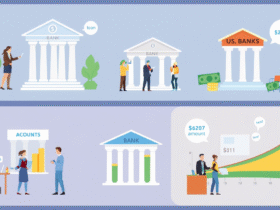The clothing business in the United States is one of the largest and most dynamic sectors in the retail industry. As a hub of fashion innovation and consumer diversity, the U.S. market offers vast opportunities for entrepreneurs, designers, and retailers. From luxury fashion to budget-friendly fast fashion, the clothing industry caters to a wide range of tastes, demographics, and preferences.
Market Overview
The U.S. clothing market was valued at over $400 billion in 2024, with steady growth expected through the decade. The industry includes various segments:
- Apparel Manufacturing
- Wholesale Distribution
- Retail (Online & Brick-and-Mortar)
- Custom Clothing & Niche Brands
The market is driven by consumer demand, global fashion trends, technological innovation, and changes in lifestyle and culture.
Key Trends in the U.S. Clothing Industry
1. Rise of E-Commerce
Online platforms have transformed how clothes are sold. Brands like Amazon Fashion, Shein, and ASOS dominate online sales, while traditional retailers like Macy’s and Nordstrom are investing heavily in digital infrastructure.
2. Sustainability and Ethical Fashion
Consumers are increasingly conscious of where and how their clothes are made. Brands that emphasize sustainable materials, ethical labor practices, and eco-friendly packaging—such as Patagonia and Everlane—are gaining popularity.
3. Customization and Personalization
Many startups and established brands are offering customizable clothing. This trend includes tailored fits, personalized prints, and on-demand manufacturing to reduce inventory waste.
4. Influencer and Social Media Marketing
Platforms like Instagram, TikTok, and Pinterest play a key role in shaping fashion trends. Collaborations with influencers help brands quickly gain visibility and market traction.
5. Fast Fashion vs. Slow Fashion
While fast fashion brands like Zara and H&M still dominate in volume, there’s growing support for slow fashion, where consumers buy fewer, higher-quality pieces that last longer.
Opportunities for Entrepreneurs
- Online Boutique Businesses
- Low startup cost
- Direct access to global markets
- Dropshipping options available
- Niche Apparel Lines
- Target specific groups (e.g., maternity, plus-size, activewear, streetwear)
- Focused branding increases loyalty
- Sustainable and Eco-Friendly Clothing
- Appeal to Gen Z and Millennials
- Opportunity for unique storytelling and brand identity
- Local Manufacturing
- “Made in USA” branding has renewed appeal
- Faster turnaround and quality control
- Tech-Integrated Fashion
- Smart clothing (fitness tracking, temperature control)
- Augmented reality (AR) for virtual try-ons
Challenges in the Clothing Business
- High Competition: Both local and global brands compete for market share.
- Supply Chain Disruptions: Delays, especially post-COVID, have affected inventory and shipping costs.
- Changing Consumer Behavior: Trends evolve rapidly, and customer loyalty is harder to maintain.
- Rising Costs: Labor, materials, and marketing expenses are increasing.
- Environmental Regulations: Pressure to reduce carbon footprint is leading to stricter compliance requirements.




Leave a Reply